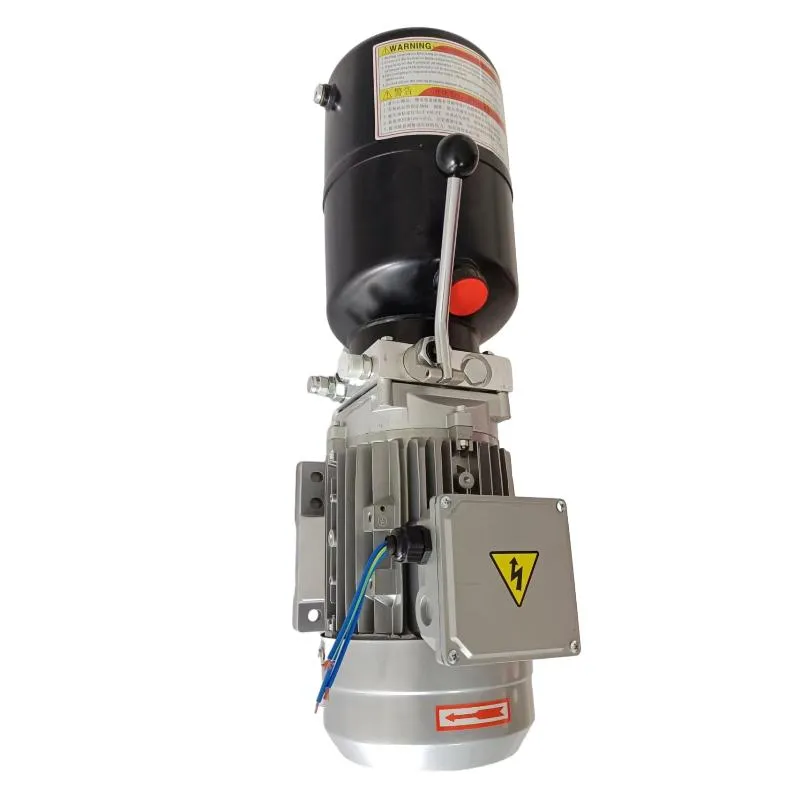Oct . 21, 2024 14:36 Back to list
Manufacturer of Hydraulic Damping Cylinders for Enhanced Performance and Reliability in Machinery
The Role of Hydraulic Damping Cylinders in Modern Manufacturing
Hydraulic damping cylinders are integral components in various mechanical applications, frequently utilized for their ability to provide controlled motion and force attenuation. These cylinders are essential in numerous industries, ranging from automotive and aerospace to construction and manufacturing. The innovation and precision involved in the manufacturing of hydraulic damping cylinders greatly influence their efficiency and reliability, ultimately enhancing the performance of the machines they serve.
Hydraulic damping cylinders function by utilizing the incompressible nature of hydraulic fluid, which allows for smooth operation and effective energy dissipation. When a force or impact occurs, the fluid within the cylinder is displaced, creating resistance that dampens the motion. This mechanism prevents shock loading and vibration, promoting the longevity of machinery and improving operator safety and comfort.
One of the primary advantages of hydraulic damping cylinders is their ability to adapt to various applications. Manufacturers have developed advanced designs that allow these cylinders to operate in diverse conditions, whether it’s within high-speed machinery or heavy-duty vehicles. For instance, in automotive suspension systems, hydraulic dampers play a crucial role in providing a smooth ride by absorbing road irregularities. Similarly, in industrial settings, they are used in equipment such as presses, where controlled motion is vital for precision.
The manufacturing process of hydraulic damping cylinders involves several critical steps, including material selection, precise engineering, and rigorous testing. High-quality materials such as steel or aluminum are often used to withstand the high pressures associated with hydraulic systems. Additionally, manufacturers employ advanced machining techniques to ensure that the cylinders are manufactured to exact specifications, allowing for optimal performance.
manufacturer of hydraulic damping cylinders for superior ...

Moreover, the innovation in hydraulic damping technology has led to the creation of adjustable damping systems. These systems enable operators to modify the damping characteristics based on specific requirements, making them versatile tools for various applications. For example, in automotive technology, adjustable dampers can improve vehicle performance by allowing the driver to choose between comfort and sport settings.
In the marine and aerospace industries, where stresses and environmental conditions can be extreme, the quality of hydraulic damping cylinders is paramount. Manufacturers must adhere to strict regulatory standards and rigorous testing procedures to ensure their products can withstand high pressures and harsh conditions. This includes conducting extensive simulations and physical tests to assess performance under real-world conditions.
Sustainability has also emerged as a crucial consideration in the manufacturing of hydraulic damping cylinders. Many manufacturers are exploring ways to produce cylinders that are not only effective but also environmentally friendly. This includes utilizing recyclable materials, reducing waste during the manufacturing process, and designing products that consume less energy throughout their lifecycle.
Furthermore, the rise of Smart Technology has begun to make its mark on hydraulic damping systems. The integration of sensors and control systems allows for real-time monitoring and adjustment of damping capabilities, leading to improved efficiency and performance. This technological advancement demonstrates the continuous evolution of hydraulic damping solutions, ensuring that manufacturers can meet growing demands while maintaining the highest standards of quality and safety.
In conclusion, hydraulic damping cylinders are vital components that play a pivotal role in various industries. The precision manufacturing of these cylinders is essential for ensuring their effectiveness and reliability in practical applications. As technology advances, manufacturers are poised to develop even more sophisticated hydraulic damping systems that enhance performance, adapt to different conditions, and adhere to sustainability practices. The future of hydraulic damping technology promises to be as dynamic and innovative as the industries it serves, ensuring that they continue to be a cornerstone of modern machinery and equipment.
-
Top Hydraulic Downfeed Control Cylinder Companies Reliable Factory-Sourced Hydraulic Downfeed Control Cylinder Supplier
NewsJun.10,2025
-
China County Line Hydraulic Cylinder Supplier - High Quality & Durable County Line Hydraulic Cylinder Factory & Company
NewsJun.10,2025
-
High-Quality China Hydraulic Trailer Jack Cylinder Manufacturer Reliable Hydraulic Trailer Jack Cylinder Factory and Company
NewsJun.10,2025
-
Custom China Car Carrier Hydraulic Cylinder Durable & High-Performance
NewsJun.10,2025
-
Northern Tool Hydraulic Power Unit Products High-Efficiency Solutions
NewsJun.10,2025
-
Top Tailboard Power Unit Company High-Performance Solutions
NewsJun.10,2025
